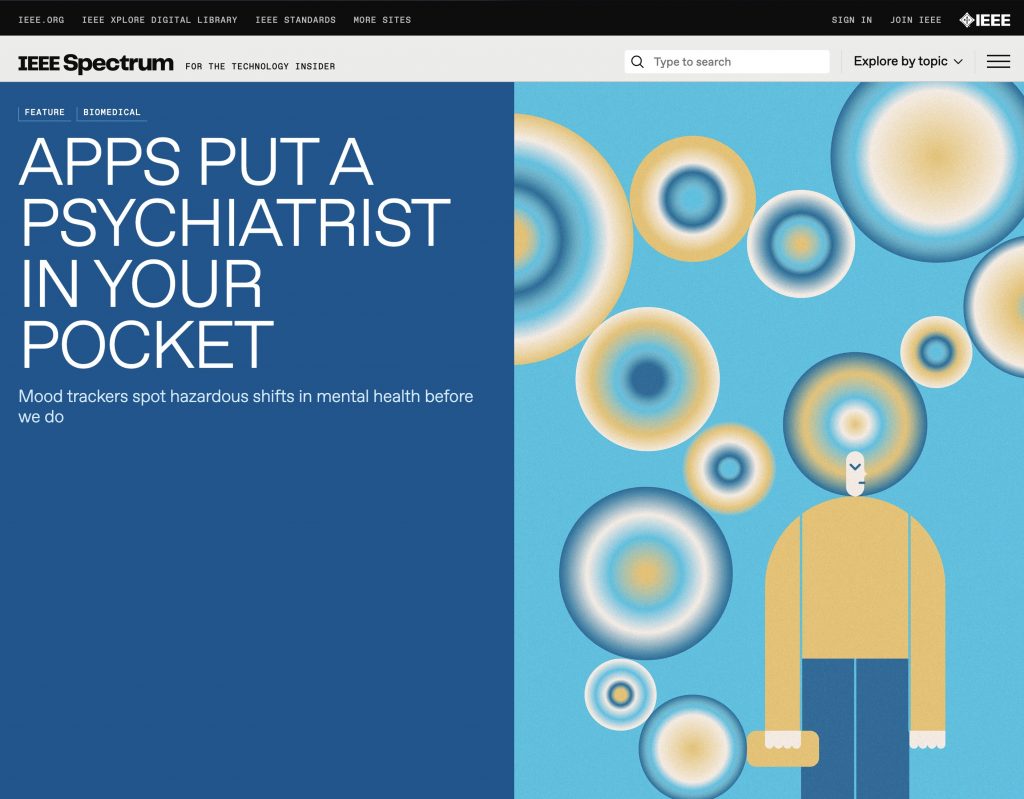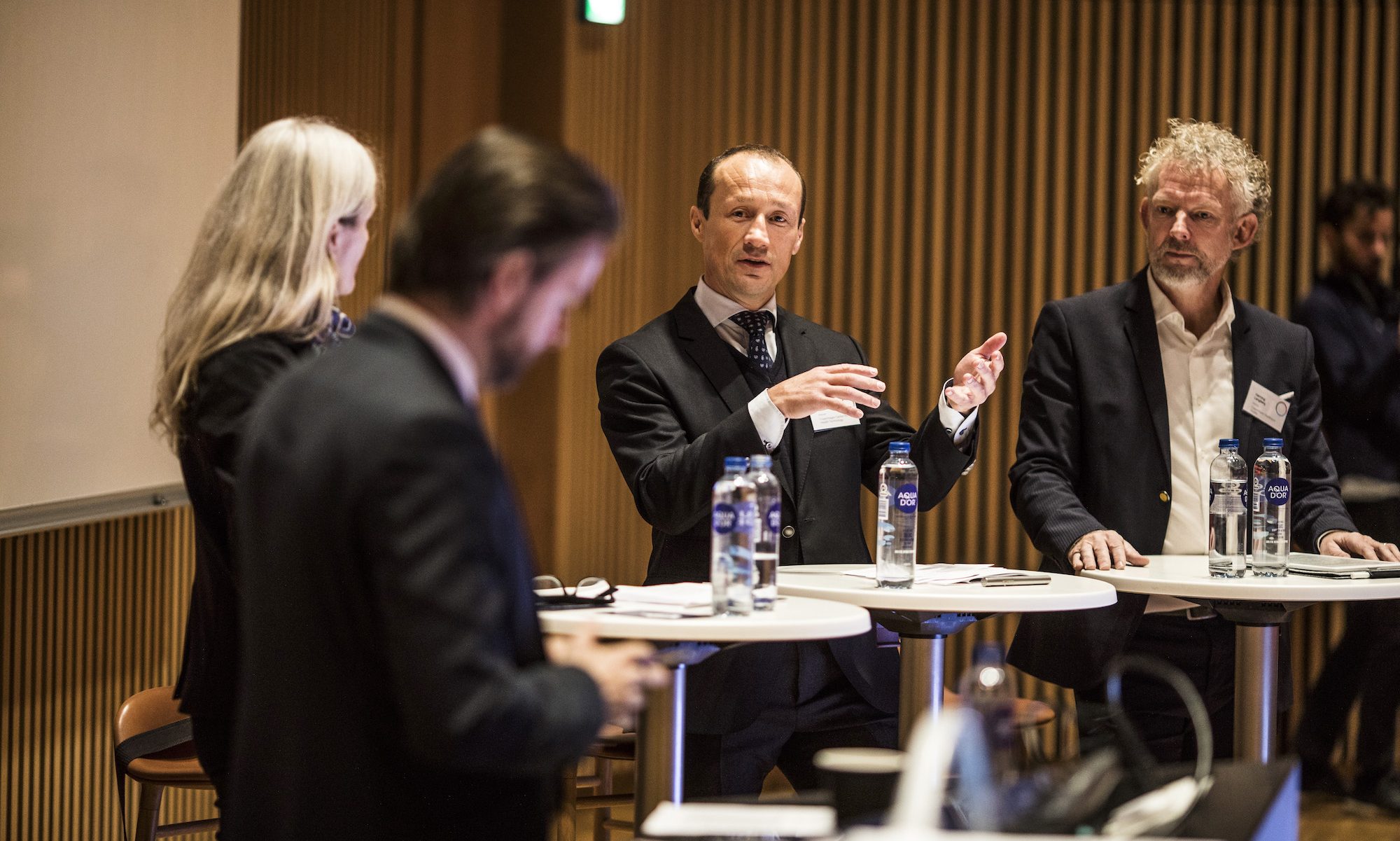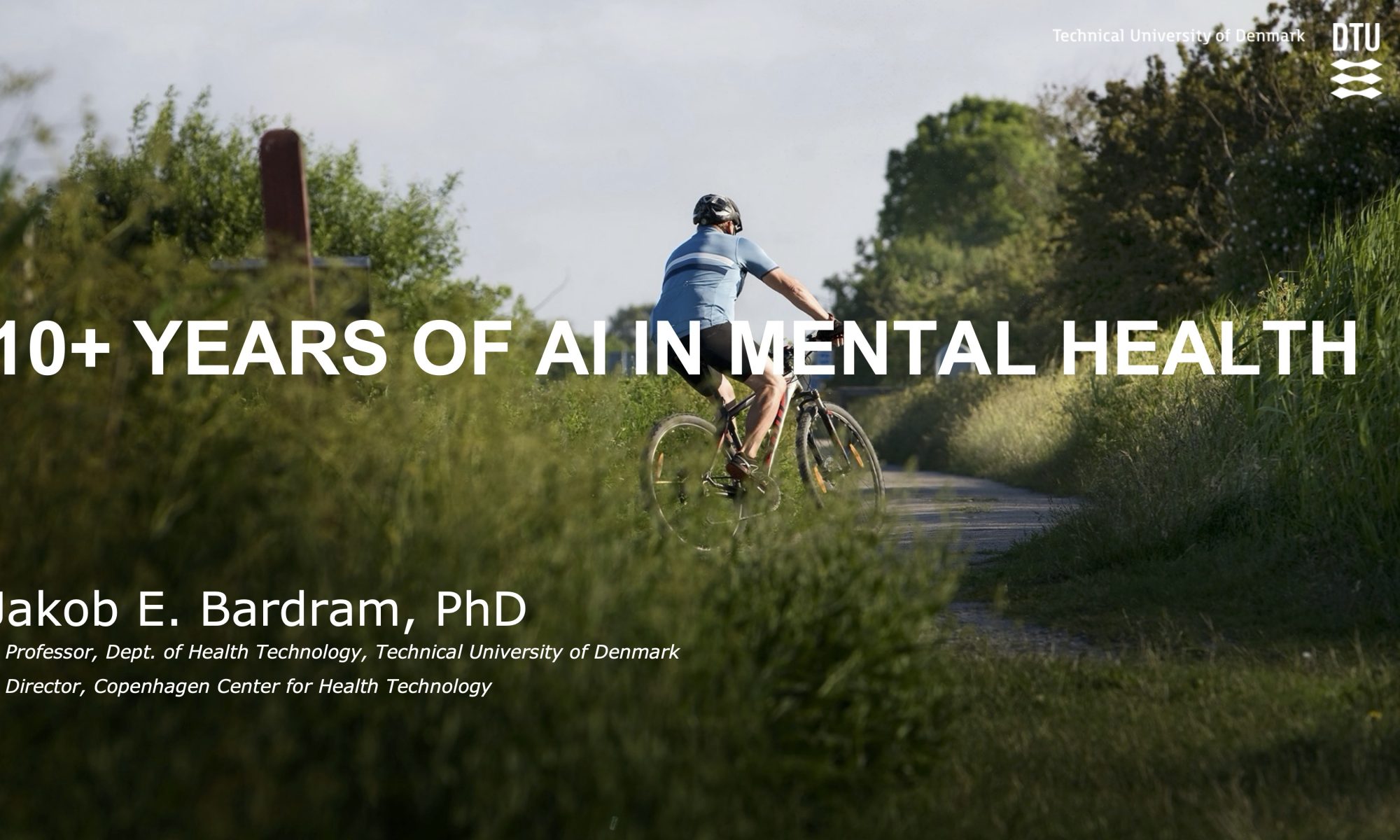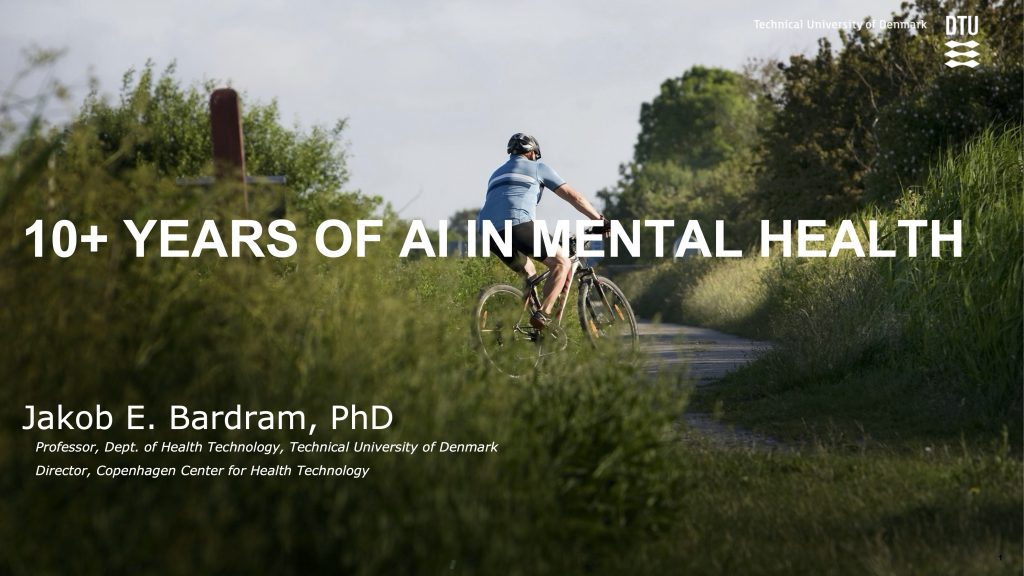The other day I gave a talk at the Artificial Intelligence in Healthcare: Advancing Patient Outcomes and Responsible Governance conference in Copenhagen. This conference was organized by the Danish Society of Engineers and the Danish Society for Healthcare Quality and enrolled a series of super interesting speakers who provided detailed insight into the state-of-the-art AI in Healthcare in Denmark.
When I was invited to give a talk, I thought this was a good opportunity to reflect on our research on using active and passive data collection and analysis in mental health. We embarked on this line of research back in 2010 with the MONARCA project, and we have now been doing this for more than 10 years. Hence, the title and abstract of the talk ended up like this:
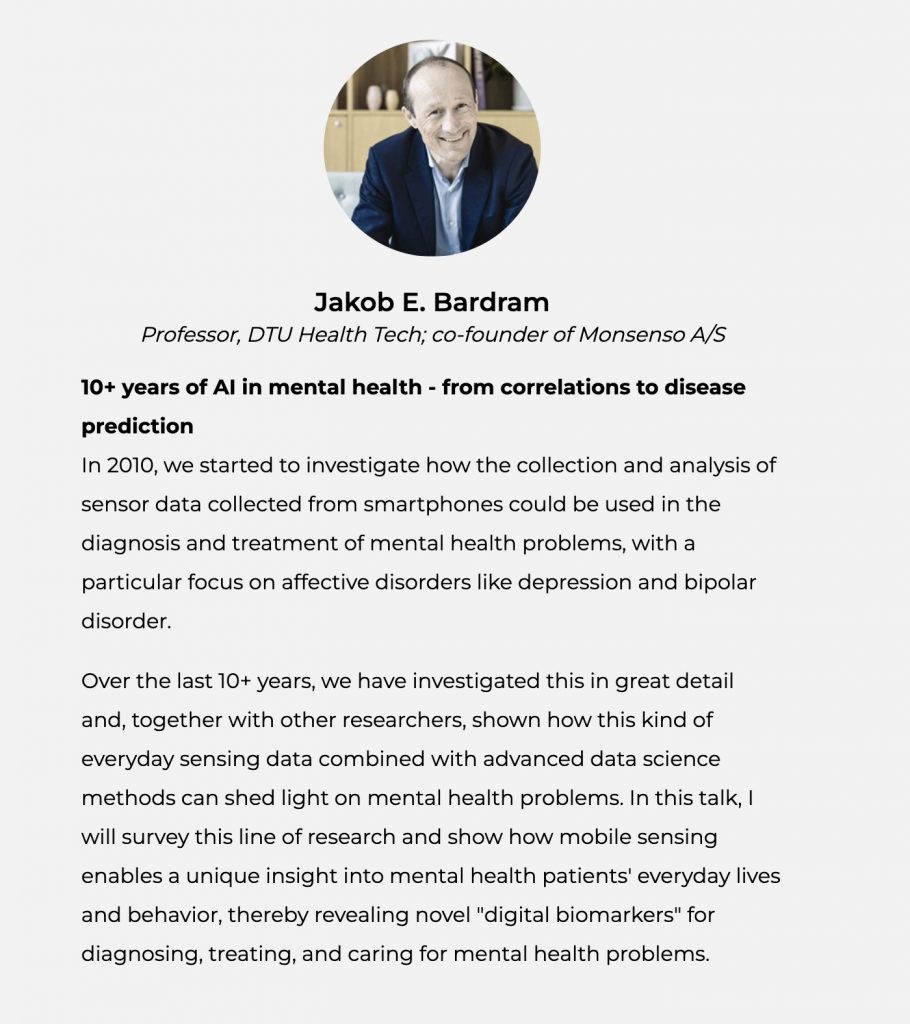
Talk
The slides from the talk are available below and it was divided into three parts:
- An introduction to the history and background of using sensing and data science methods in mental health by introducing the MONARCA Project and the subsequent spin-out MONSENSO A/S.
- Different examples of how data analysis has provided a deeper insight into mental health, especially in ambulatory (non-clinical) settings. I presented how we have done three types of data analysis studies:
- Correlation studies where we have found a correlation between e.g., self-reported mood and clinical diagnosis; mobility traces and mood; and voice features and mood.
- Classification studies where we can classify both in terms of a diagnosis and in terms of stages of illness, such as discriminating depressive patients from healthy subjects and identifying different levels of depression.
- Prediction studies where active sensing (i.e., patient-reported measures like sleep and cognitive problems) can be used to predict the mood of a patient up to 7 days in advance or how passive sensing data (like location) can be used to predict mood up to 14 days.
- A final wrap-up showing how this line of research is part of a greater research agenda on Digital Phenotyping, which I am currently pursuing as part of the Copenhagen Research Platform (CARP).
Key Messages
The key take-away messages from this line of research are that;
- Passive and active mobile sensing has been shown to provide scalable, objective, and valid digital biomarkers for use in the continuous monitoring, diagnosis, and treatment of mental health
- This line of Digital Phenotyping research provides a unique scientific opportunity to gather ecologically valid and long-term data from patients’ daily lives to be used in improving diagnosis, treatment, and care of patients.
Outlook
Our line of research is part of an international trend of using active and passive sensing to improve mental health. The IEEE Spectrum magazine recently published this nice overview of what is happening in the US. We all know that the US has a different healthcare model that relies less on a public healthcare system and hence the US approach is somewhat different. But the underlying technologies are very similar.
